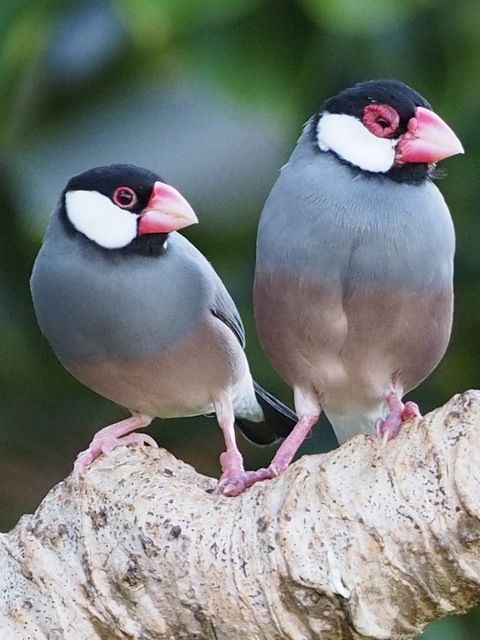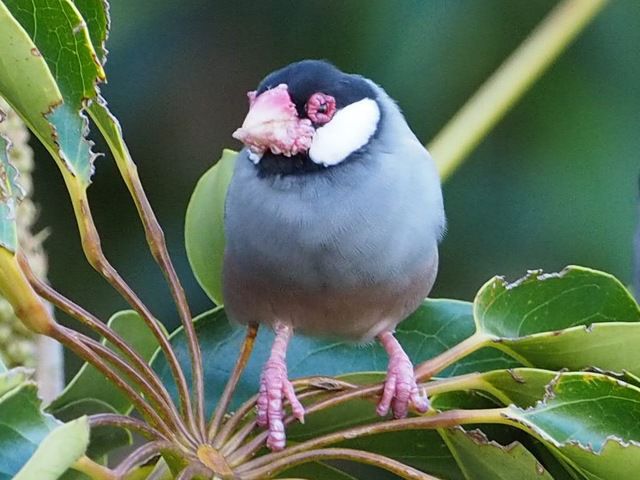KAPAA — Joan Roughgarden caught some unusual growths on a Java finch she photographed in her Kapaa back yard over the first weekend in July.
She was testing out a new camera and was impressed that her photos were clear enough to detail bumpy eyelids and tumor-like lumps along the beaks of the bird.
She was also worried, because she was unfamiliar with the symptoms.
“I showed them to a nature photographer friend of mine and he’d never seen it,” Roughgarden said. “The pictures came out so well, but the bird looked so unusual.”
Thierry Work, wildlife specialist with the U.S. Fish and Wildlife Service, Pacific Islands Fish and Wildlife Office, diagnosed the birds within a minute of hearing about their symptoms: Avian pox.
“Avian pox is a virus that causes growths around their eyes,” Work said. “They can get lesions on their feet and if they perch on a branch, the virus will spread that way. You get periodic outbreaks in non-native birds, probably related to mosquitoes.”
John Vetter, wildlife biologist with the Deparment of Land and Natural Resources’ Department of Forestry and Wildlife, said avian pox is widespread across the islands and it’s “not at all unusual to see it in Java finches on Kauai.”
“It probably arrived in Hawaii with the first domestic chickens, but has spread over the past two centuries after the introduction of mosquitoes to the islands,” Vetter said.
According to the U.S. Geological Survey National Wildlife Health Center’s Field Manual of Wildlife Diseases, avian pox is most commonly found among songbirds, upland gamebirds and marine birds. Raptors, waterfowl and wading birds, as well as shore birds, occasionally contract the virus.
“Many bird species in Hawaii can be infected by avian pox,” Vetter said. “The main vector that spreads the disease is the mosquito, so it is more prevalent in lower elevations where mosquitoes are more abundant.”
The disease causes wart-like lesions in featherless areas of the birds and disease outbreaks have been associated with environmental conditions — such as emergence of mosquitos and other vector populations, temperature and the habits of the species.
Small lesions usually heal, leaving only scars, according to the field manual, but if the nodules become too concentrated or grow too large, they can interfere with breathing and feeding. Bacterial infections can also develop and that’s what usually leads to bird mortality.
“For most birds, avian pox itself is not fatal, though the secondary impacts might result in emaciation or death,” Vetter said. “Many birds that have overcome the infection have missing toes.”
He said it is possible to decontaminate bird feeders, birdbaths and other surfaces from avian pox with a bleach solution.
According to the USGS Field Manual, there is no evidence that avian pox can infect humans, but the virus is part of a larger family of poxviruses that includes small pox.
Work said avian pox can be dangerous in native birds, but it’s “low on the totem pole compared to threats like avian malaria and invasive species, like the feral cats.”






